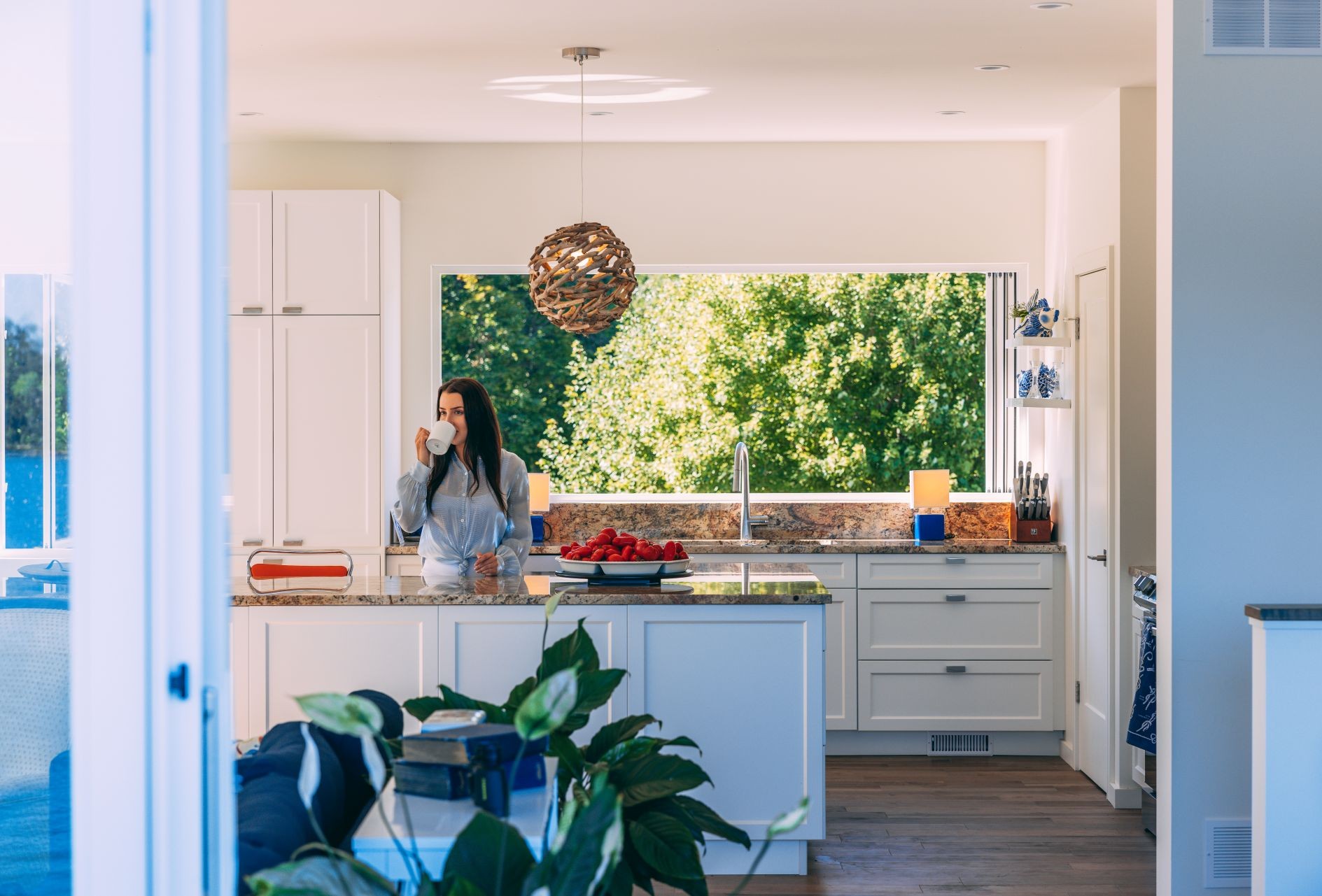
Window Styles & Comparisons
Best Small House Open Concept Kitchen and Living Room Ideas
If you live in a small house, you've likely faced the challenge of trying to make your space feel bigger, brighter, and more functional. One of the smartest solutions in this situation is to design an open concept kitchen and living room.
This article will help you visualize a small house open concept kitchen and living room design that doesn't just look good but actually suits your lifestyle!
Key Takeaways
- If you remove barriers between the kitchen and living room, you will increase natural light, enhance airflow, and even encourage interaction among family and guests.
- A smart design makes a big impact, so it's important to consider the tiniest details when arranging furniture, choosing lighting solutions, or incorporating storage spaces. Make sure to use a cohesive color scheme within the two spaces for a cozy feel.
- Incorporate glass elements to make your small house feel larger. You can install Magic windows, glass doors, and window walls, for example, as they boost natural light, improve ventilation, and visually expand your interior.
Is an Open Concept Kitchen and Living Room a Good Idea?

First, the open concept layout eliminates unnecessary barriers and creates a seamless flow between the kitchen and the living room. It goes without saying that, without partition walls, light circulates more effectively, and visual sightlines are extended, making compact homes feel significantly larger.
Furthermore, if the kitchen itself doesn't have enough space for a large window, you can install one in the living room area, so you can ventilate the entire space and bring in natural light.
More importantly, this setup fosters connectivity! You'll prepare meals with your family and find it easier to entertain your guests! It allows activities to overlap, being especially useful for busy households.
From a design standpoint, an open layout is excellent for homeowners who want a contemporary aesthetic with clean lines. It allows for a unified style across zones, which creates visual cohesion and a greater sense of order and spaciousness.
Plan Your Layout Wisely
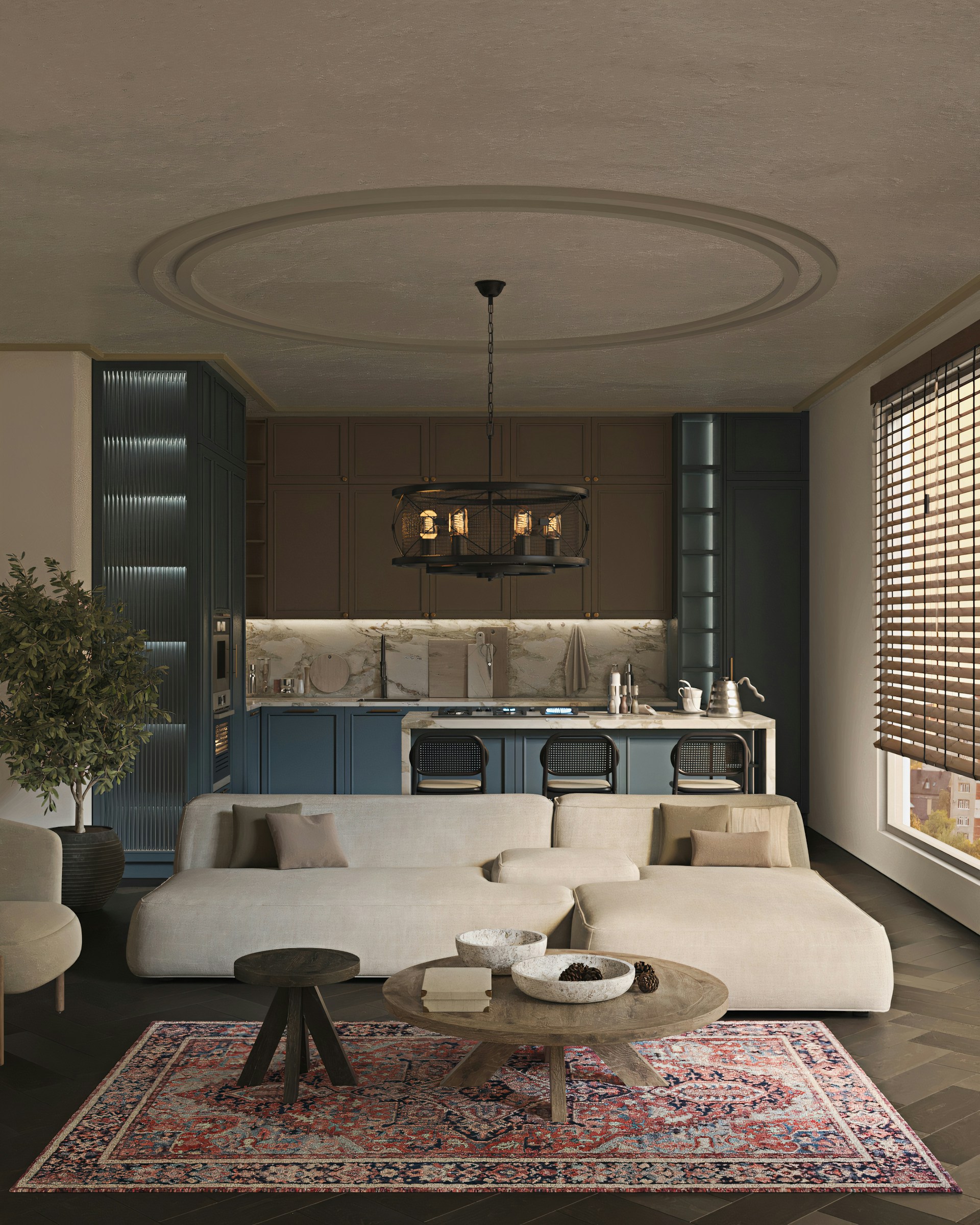
Open concept spaces must be meticulously designed. Otherwise, they may look chaotic or undefined. The key lies in subtly zoning the space. Another secret is to maintain an intuitive flow between functions. In this regard, it's particularly useful to install kitchen islands or peninsulas. They provide both spatial separation and practical utility. Plus, they serve as visual anchors and even gathering spots for your family and friends!
In smaller spaces, homeowners go for galley or linear kitchens to maintain openness and conserve valuable floor space. Another excellent idea is to position the kitchen along one wall and allow the living area to unfold beside or across from it. This arrangement creates a balanced aesthetic.
And don't forget that you need to be able to move freely! It's recommended to have at least 36 inches of clearance between zones for free movement. You can also use variations in flooring texture to guide the eye and gently demarcate one space from another.
Pick the Right Furniture
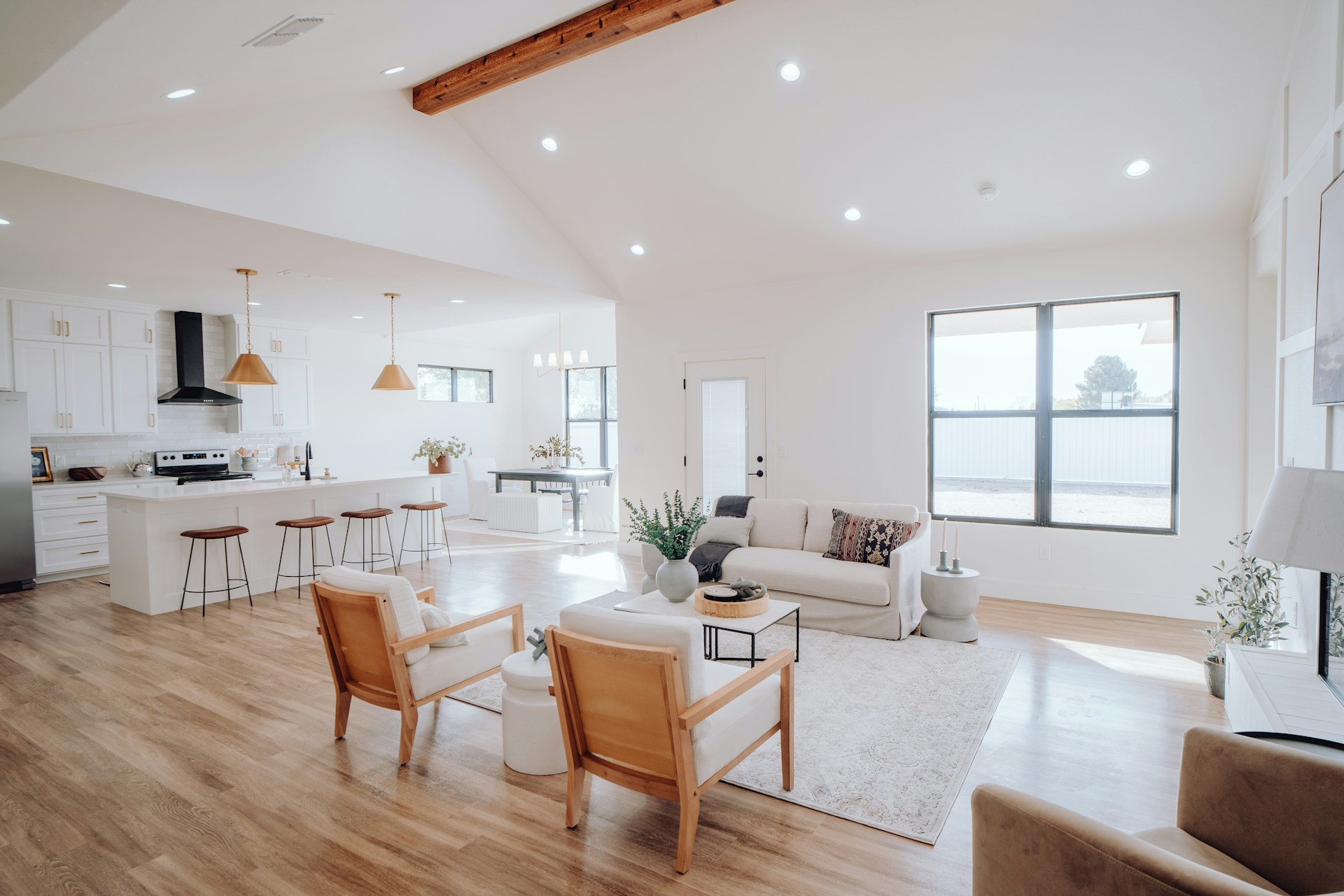
If you want an open concept that incorporates a small kitchen and a living/dining room, you must choose the furniture wisely. In small homes, the goal is to choose furniture pieces that won't make the space feel cluttered. For example, you could go for pieces that multitask, such as:
- Sofas with storage space
- Stools that can be used as coffee tables
- Window seats with incorporated bookshelves
- Laptop tables that can tuck neatly under a sofa
- Adjustable dining tables
You can also go for slim-profile sofas, armless chairs, and open-framed pieces. All of these enhance airiness and allow light to move freely.
Furthermore, it's worth considering to include low-backed furniture and lightweight silhouettes into your design. These will maintain open sightlines, ensuring that no area feels visually blocked. As already mentioned, cohesion is extremely important, so select pieces that share complementary materials, finishes, and color tones across the kitchen and the living room.
Arrange Your Furniture Strategically
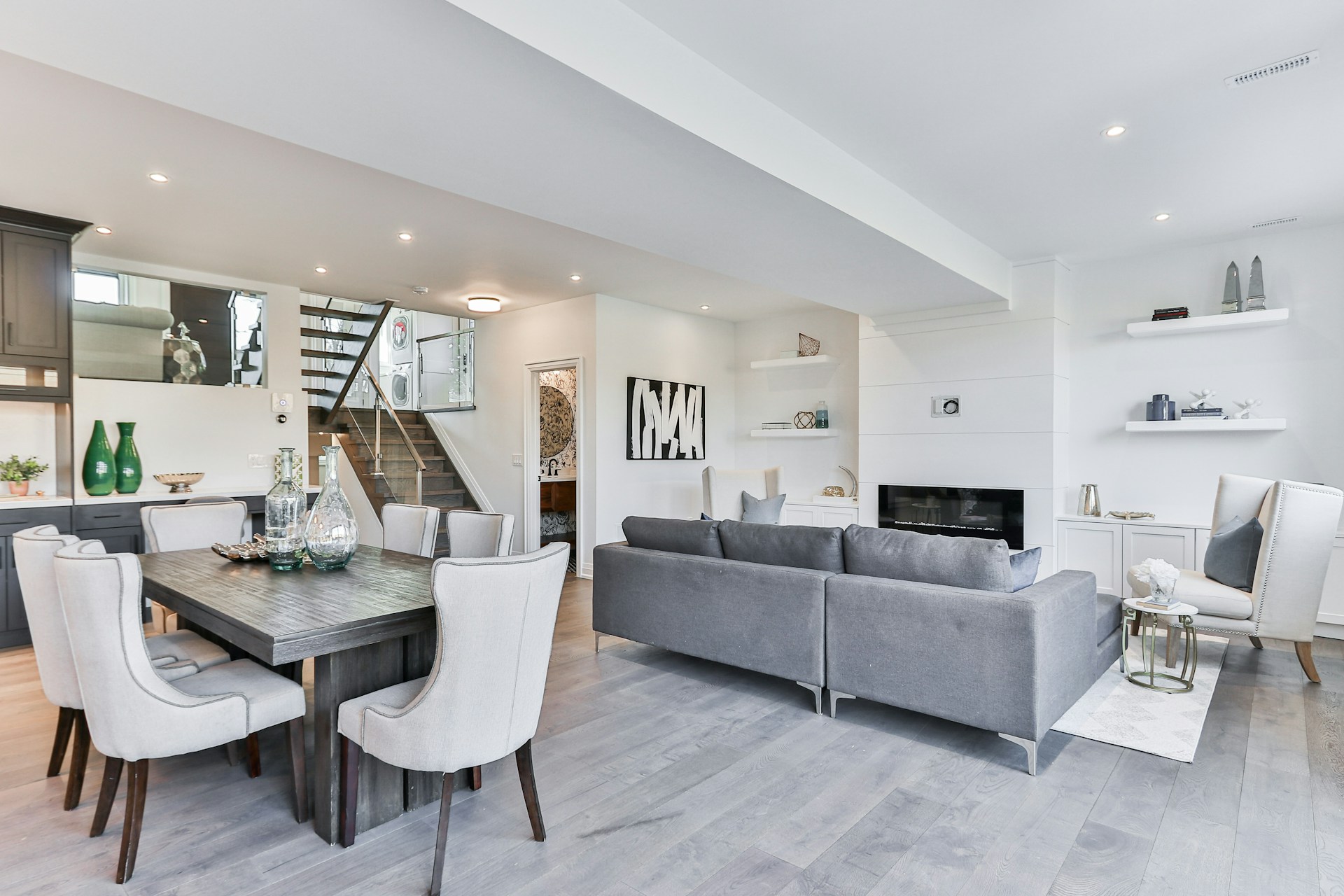
You should arrange furniture to create visually divided zones without using physical walls.
Start by identifying the focal point in each area. In the living room, a statement piece could be a media console, fireplace, or large piece of art. Anchor the seating arrangement around that focal point and ensure there's enough space for you to move freely. Avoid pushing all furniture against the walls. Instead, float the sofa or use a low console table to subtly define the edge of the living zone.
In the kitchen area, if possible, position a small island or a narrow console as a transition element. You can also use area rugs to delineate different sections within an open space.
Use Different Lighting Solutions
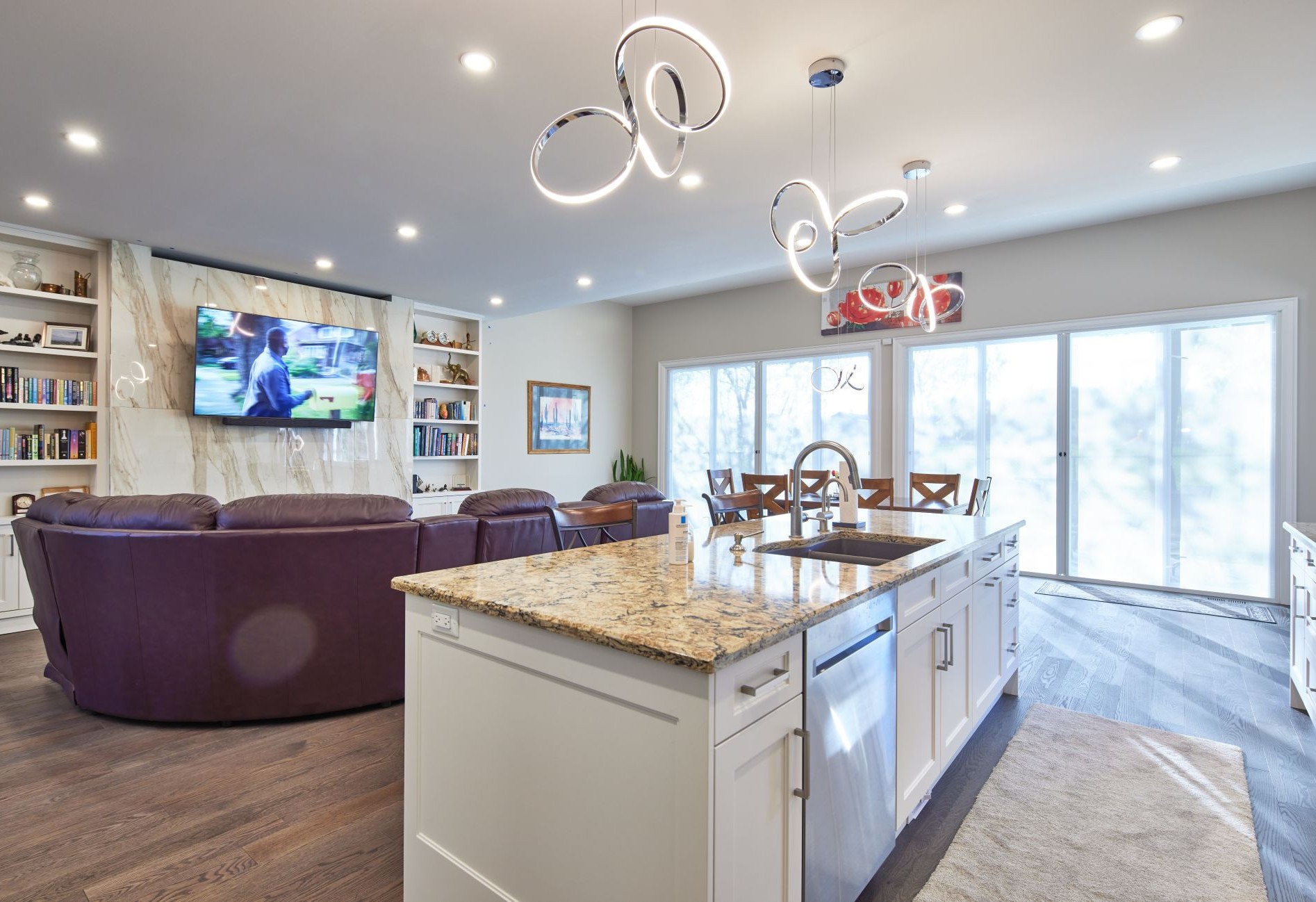
Although it seems like a minor detail when it comes to decor, lighting is actually one of the most powerful tools you can take advantage of in open concept design styles, even more so if your house is small!
The secret lies in layering:
- Ambient lighting provides general illumination.
- Task lighting supports work zones like the kitchen counter or your reading area.
- Accent lighting adds mood and highlights focal points.
- Pendant lights above an island or dining area offer task lighting and visually distinguish the kitchen zone.
- Recessed lighting is perfect for low ceilings or minimalist schemes.
Furthermore, it's recommended to incorporate reflective surfaces, such as gloss cabinetry, mirrored backsplashes, or glass light fixtures. These can bounce light throughout the room and create the illusion of depth.
Incorporate Smart Storage Solutions
If your house is small, it's of the essence to design it wisely so you have enough storage space. For example, you can opt for floor-to-ceiling cabinetry in the kitchen, especially if you have higher ceilings. You can also install open shelving strategically to display attractive items, all while keeping it minimal, so the space doesn't feel cramped.
Moreover, living room furniture should double as storage to achieve a functional space: look for sofas with hidden compartments, sideboards that tuck neatly behind sofas, or benches with lift-up seats. You can also make use of overlooked spaces, like corners or areas under windows, for custom built-ins or floating storage.
Create the Illusion of Space
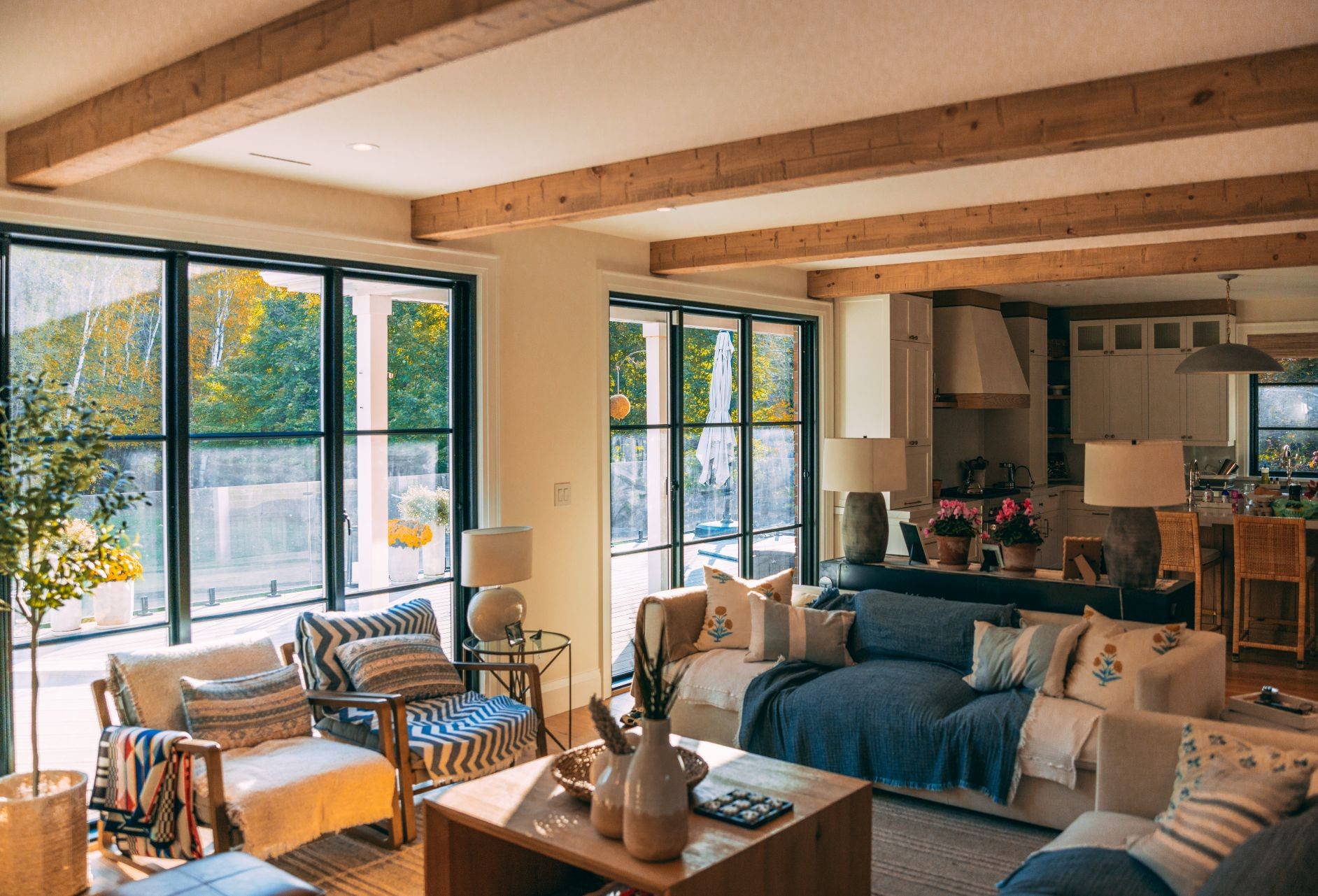
Even small homes can feel expansive with the right visual strategies, such as:
- Using a continuous material palette: consistent flooring, matching cabinetry finishes, or neutral paint colors; these can blur the lines between areas and extend the perception of space; for example, if you like natural materials, like natural wood, incorporate them into the entire area.
- Choosing light or neutral colors, as they reflect more light and open up rooms: go for soft whites, warm beiges, and cool grays; white cabinets are particularly favored for open floor plans.
- Incorporating simple decor pieces that highlight vertical lines, tall shelving, and elongated curtains.
Install Large Windows and Window Walls
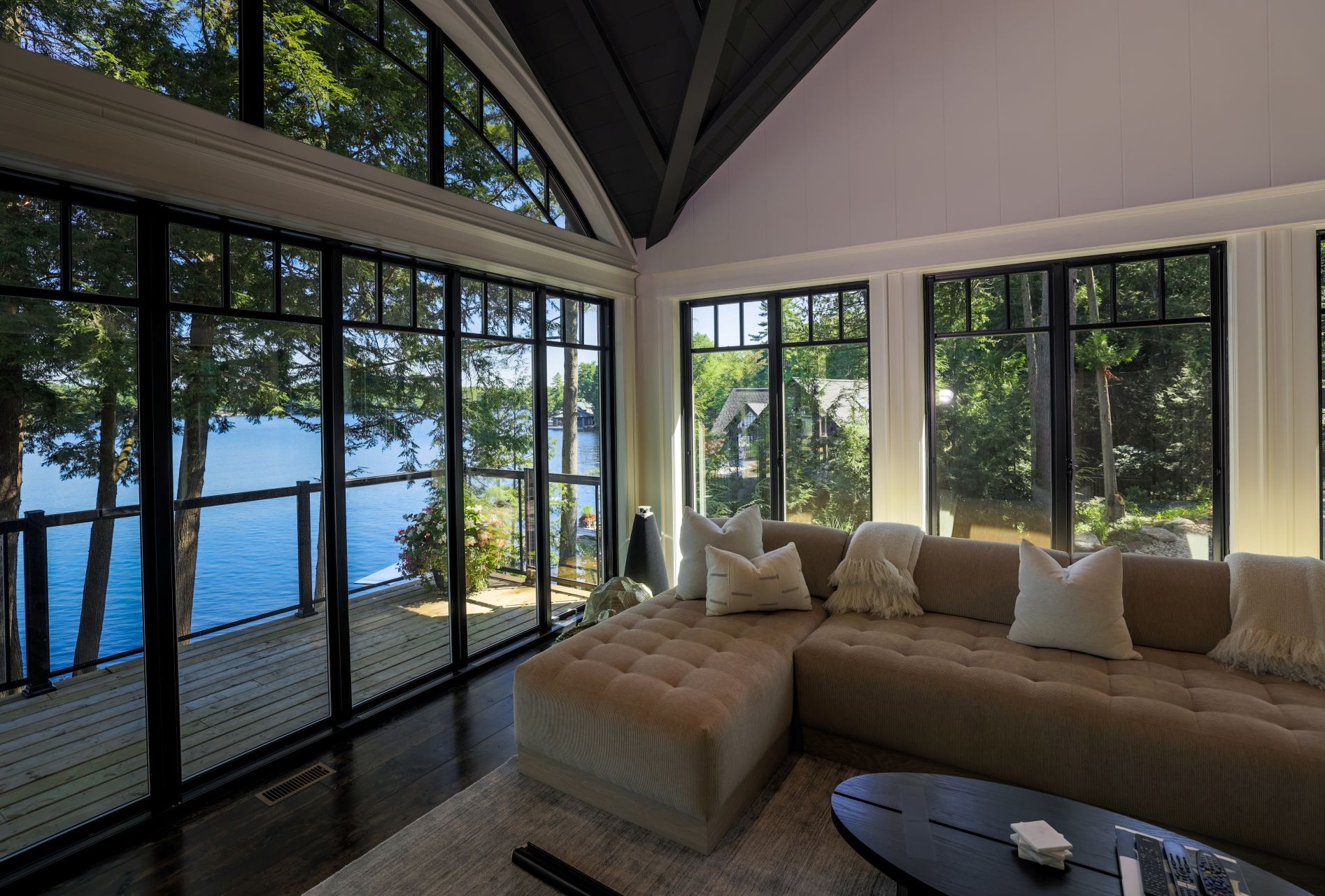
One of the most impactful ways to make sure your small house stays a bright, airy space is by installing large windows. Or, even better, install window walls! These architectural elements blur the line between indoors and outdoors and are undoubtedly visually appealing, making the space feel much larger.
Large panes of glass invite natural light in, which illuminates corners and reduces the need for artificial lighting during the day. Besides making the space feel larger, natural light also highlights textures, colors, and design features that might otherwise go unnoticed.
If privacy is a concern, you can install clerestory windows, which are positioned high on the walls. However, you can also install Magic windows or window walls, which come with fully retractable thermal blinds that provide 100% privacy when needed.
If your living room opens to a patio, you can install a large patio door or a window wall. Without a doubt, both will serve as visual interest for both the interior and the exterior of your house, as well as make your house feel larger.
Use an Accent Color and Repeat Design Elements
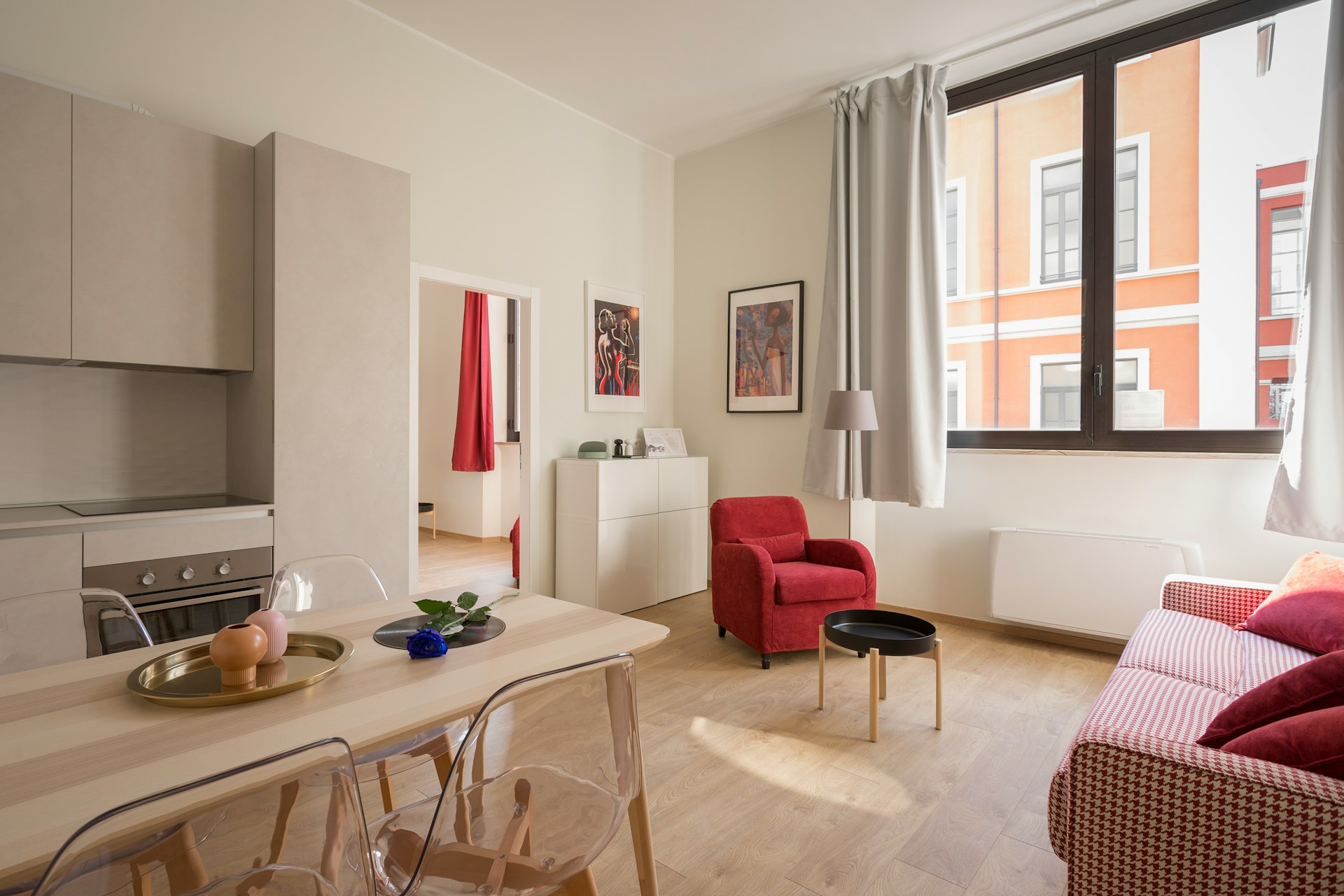
Choose one or two accent colors that complement your primary palette and weave them throughout both the kitchen and living spaces. This could be achieved through upholstered dining chairs, throw pillows, cabinetry hardware, or decorative accessories. The repetition of these varying shades of the same color helps stitch the zones together visually.
Beyond color, you can repeat shapes, textures, or materials. This will reinforce a consistent interior design language. For example, if your kitchen features matte black fixtures, echo that finish in living room light fittings or picture frames.
Integrate Dining into the Open Concept
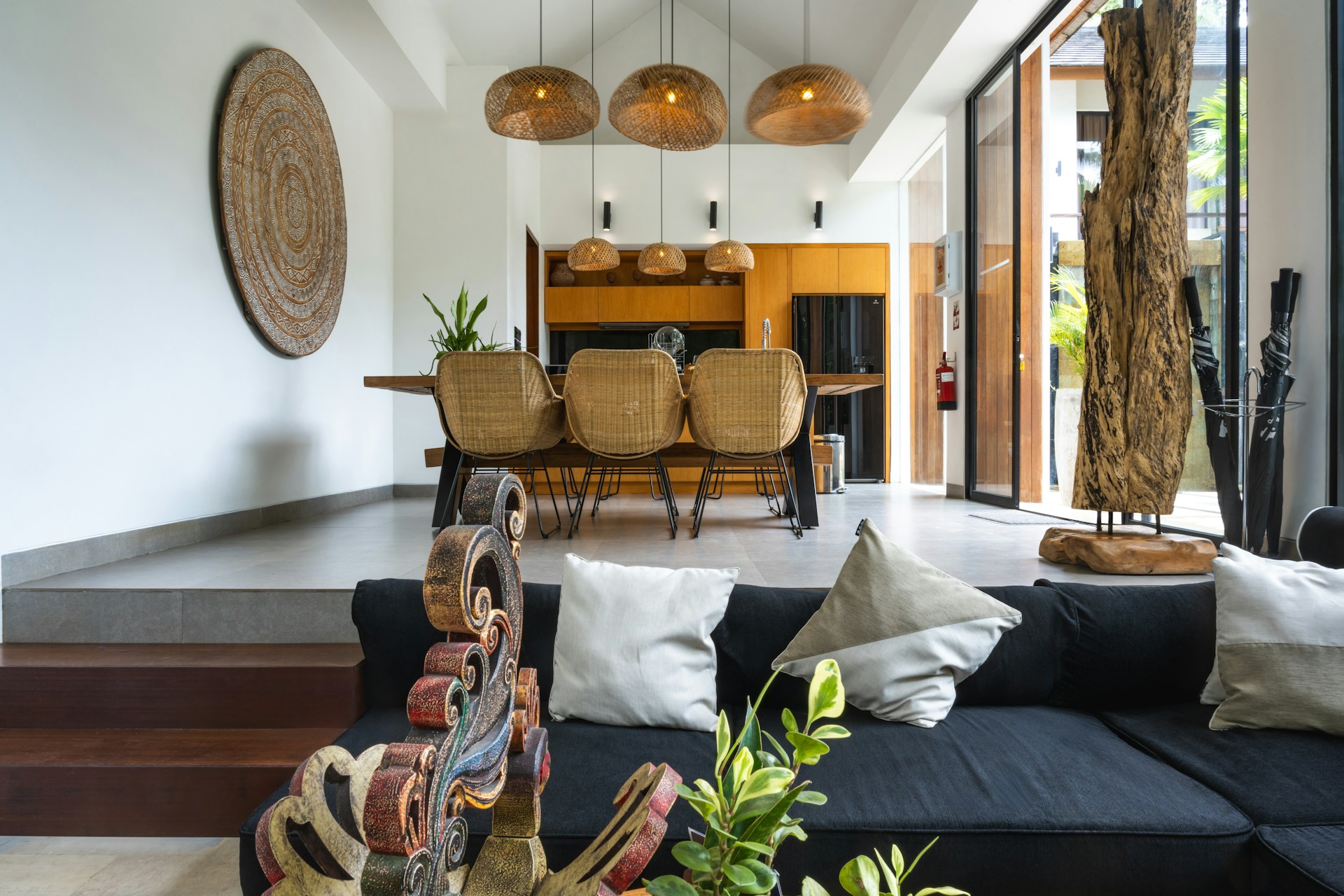
In small homes, it can feel unrealistic to carve out space for a formal dining room, but it's definitely possible! A well-integrated dining area can seamlessly connect the kitchen and living zones, serving as a transition point both visually and functionally.
Consider a compact dining table adjacent to the kitchen island or parallel to the cabinetry wall. Drop-leaf or extendable tables are particularly useful in small spaces. You can also use banquette seating along a wall or a window nook to save space and add coziness.
Don't Forget About Acoustics and Noise Control
Open layouts can be quite noisy, so it's recommended to take some measures to reduce noise. Here are some tips in this regard:
- Use fabric-rich furnishings, like upholstered chairs, area rugs, curtains, and throw pillows, to absorb sound.
- Incorporate acoustic panels or textured wall treatments for subtle soundproofing.
- Choose quiet appliances with low decibel ratings, especially for dishwashers and range hoods.
Think about Energy Efficiency and Ventilation
Good airflow and temperature control are of utmost importance in small houses with an open concept. Without partition walls, warm or cool air circulates differently, so it's important to:
- Position ceiling fans strategically to promote even airflow throughout the open space.
- Use zoned lighting and HVAC systems where possible to prevent energy waste.
- Install operable windows on opposite walls to allow for effective cross-ventilation.
- Choose energy-efficient appliances and LED lighting to reduce heat output and energy usage.
Things to Avoid in a Small Open Concept Kitchen and Living Room
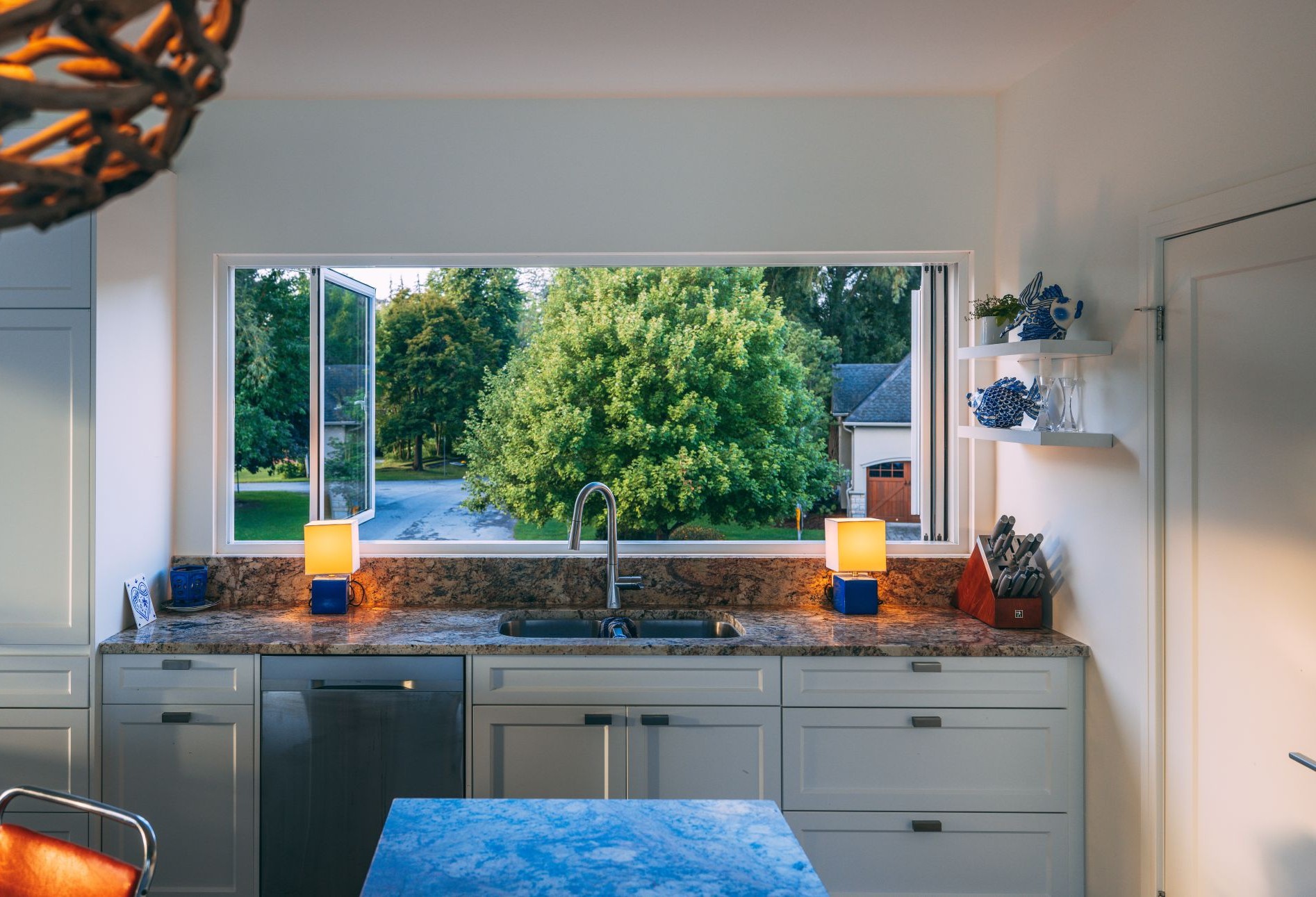
While open concept living offers many advantages, there are a few common pitfalls to avoid in small homes:
- Overfurnishing: too much furniture or furniture that’s too large can overwhelm the space. Therefore, choose scaled-down, multifunctional pieces that fit the proportions of your home.
- Clashing styles: a stark contrast between kitchen and living room aesthetics can disrupt flow. It's best to aim for visual continuity by using one design style that incorporates similar materials, colors, or design motifs for your decorative elements. Additionally, use the same flooring in the kitchen and living room, and incorporate paneled appliances. This will create visual interest.
- Neglecting storage: open spaces leave little room to hide clutter, so make sure to integrate smart storage solutions, such as open shelves, as they can make a huge difference in a small house!
- Uninspired lighting design: don't rely solely on ceiling fixtures, as this can make your space flat and uninviting. Instead, mix lighting sources at different heights.
- Lack of defined zones: when everything flows but nothing is grounded, the space can feel disorganized. Use rugs, furniture orientation, or ceiling treatments to subtly define each area.
Why Magic Units Are Excellent for Small Open Concept Spaces

In compact homes with open layouts, Magic windows, glass doors, and window walls can dramatically enhance both style and functionality! Here's how:
- Our units have ultra-slim frames, which means they maximize natural light and views.
- Magic products come with fully retractable bug screens, which means they remain hidden when not in use for unobstructed views. You can also opt for solar shades for light control and thermal blinds for privacy control and energy efficiency.
- Magic windows, glass doors, and window walls are incredibly easy to use, so you'll find yourself keeping them open all day long!
- Our products can be designed in a myriad of colors and shapes, so they can be installed strategically, depending on how much wall space you have.
- Magic units are highly energy-efficient. This means you can safely install large windows or window walls without risking paying too much on energy bills.
If you want to discover more Magic tricks, book a free consultation with us!
Frequently Asked Questions
Is an open kitchen with a living room a good idea?
Yes, an open kitchen with a living room is a great idea, especially for small homes, because it enhances natural light, improves flow, and makes the space feel larger and more functional.
How do you separate an open-concept kitchen and living room?
You can subtly separate an open-concept kitchen and living room with rugs and lighting, as well as by arranging furniture pieces strategically. You can also use a kitchen island or a low console table to define each zone.
What's it called when the kitchen and living room are together?
The design of having the kitchen and living room together is usually referred to as an open-concept or open-plan layout.
How to separate the kitchen and living room in a small apartment ?
You can separate the kitchen and living room in a small apartment by creating visual separation with design tricks like area rugs, different flooring textures, lighting variations, or furniture placement.
How can I enhance natural light in my small open concept kitchen and living room?
To enhance natural light in your small open concept kitchen and living room, try incorporating large windows or skylights and use shiny surfaces that reflect light. Light-colored decor and smart lighting can also brighten up the space beautifully.
What are the benefits of using multi-functional furniture in small spaces?
Using multi-functional furniture in small spaces is a game-changer because it maximizes utility and keeps things tidy. Think of ottomans with storage or adjustable dining tables that blend practicality with stylish design.